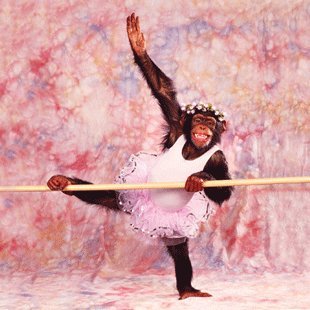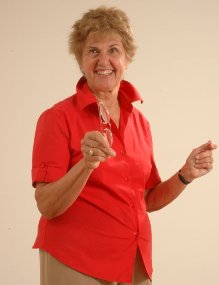A few years ago, I watched a very interesting interview of Victoria Beckham, otherwise known as Posh of the Spice Girls. She's also known for being married to English football star David Beckham:
Who is very cute. Not as cute as:
Anthony Howell, but cute nonetheless.
Really, I'm not very interested in celebrities. My exposure to them is mostly limited to perusing magazines at the hair salon, since I don't watch a lot of television and, quite frankly, don't get out much. But this interview really stuck out in my mind such that it's still taking up space in my memory that could be used for more valuable things... like where I last put my keys. Maybe if I finally write about it I'll free up some space?
They discussed fame a bit, and Posh said the nice thing about being famous is that it 'gives you a voice.' I found that kind of funny because I think this is the first and only time I had ever heard her speak. She mostly seems to model designer clothes with her signature pose: hip jutted out with lips puckered on her very severe, unsmiling face.
Also, the interviewer asked about Posh's thinness. Posh is pretty thin. She's not carrying around anything she doesn't need to. Assuming she doesn't have an eating disorder, this is impressive since the woman has birthed four children. She was asked about her eats and the conversation went something like this:
Random Interviewer: Victoria, you're very thin.
Posh: (doesn't say anything, smirks just a tiny bit because she is proud of herself, but smiling isn't part of her self-marketing strategy.)
RI: So... what do you eat?
Posh: I eat very healthy.
RI: Do you ever eat cake?
Posh: No.
RI: Not even on your birthday?
Posh: (Shakes her head. Doesn't speak. Assumes severe face and repositions lemon wedge between teeth and gums.)
RI: Never?
Posh: Nev-ah!
Really? Nev-ah? Wow. I did find this photo that she posted on her Twitter feed last year... on her birthday:
Indicating that she can, in fact, interact with cake in some capacity.
Still, I find her denunciation of cake to be fascinating because I like cake. A lot. I'm all about cake. I can't imagine nev-ah having cake. Of course, cake is a sometimes food. It's for special occasions, like birthdays and church dinners when my friend Ashley makes to-die-for cupcakes.
Really, I don't want to crack on Posh too much for not eating cake. It's not like you need cake to live. It is pretty nutritionally bankrupt and calorically dense, but it's a celebratory food, like champagne. You could also live without champagne, but why would you want to? It's for weddings and New Year's Eve. Of course, I went to bed at 9.30 on New Year's Eve with my hot water bottle and cozy blue robe. My small people do not respect the sanctity of such occasions and are up at their usual ungodly hour New Year's Day, but I still had some champagne. At 7.30.
Maybe she just doesn't like cake? The Darling Husband doesn't like cake. He's a pie guy. Maybe she eats pie? (Probably not.) Maybe she's just really disciplined and self-controlled and knows that cake will give her a sugar rush and make her heart pound and it's just not worth it, in which case I salute her. Though I'm willing to endure the mild heart-pounding for Ashley's cupcakes at the monthly church dinners... because, they're that good.
I'm not going to assume Posh has an eating disorder. While it's possible, I hate it when not-super-thin people assume super-thin-people have eating disorders. I think it's rude. I don't know her. I know, that's shocking to you, but really, we don't run in the same circles. Clearly, it's a choice that Posh makes because she likes the results. I might do the same if I were compelled by my career to sashay in little more than a slip down red carpets, which I understand on good authority can be 'terrifying.' And I believe it.
At the end of the day, we all make choices. And we all have to live with the results. I eat cake from time to time, and other things daily that Posh probably doesn't eat. I'm not super-thin, but I'm fine. I'm strong and healthy and can do all the things I need to do, and pretty much everything I want to do. You just have to make your choices and be at peace with them. I also choose not to have cake in my house with any regularity because I'd eat the whole thing hiding in the kitchen from my children--which is also a form of disordered eating, by the way. So I keep cake as a sometimes food.
If Posh ever had the desire to end her moratorium on cake, I would suggest she take up blogging. She could still have 'a voice' without all the media scrutiny. Then she could have her cake... and eat it, too!







.JPG)

.JPG)






